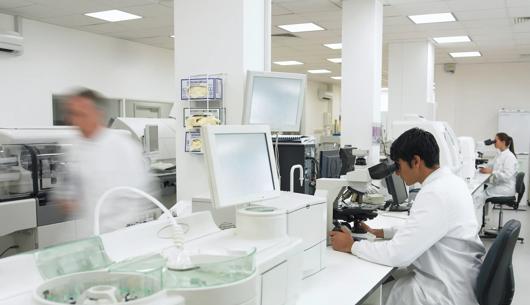The Patient Safety Incident Response Framework (PSIRF) will replace the Serious Incident Framework 2015 and will be mandatory for all services provided under the NHS Standard Contract. This includes NHS-funded secondary care provided by independent provider organisations under the NHS Standard Contract. Healthcare organisations providing services under the NHS Standard Contract are expected to transition to PSIRF by Autumn 2023.
For those involved in incident investigation, PSIRF represents an exciting new era and a marked change from the Serious Incident Framework 2015. A key change is that under PSIRF there is no distinction between incidents and ‘serious incidents’. Instead, the new framework encompasses safety culture, quality improvement and supporting behavioural change across the NHS.
PSIRF will be intrinsic to guide your organisation to respond to patient safety risks in an effective, impactful, and meaningful way. Those working in patient safety and incident investigation have been busy preparing for the implementation of PSIRF for some time. However, PSIRF is not limited to those in patient safety and incident investigation roles. To be effective, PSIRF needs to be embraced across an organisation including involvement from Quality Improvement and Organisational Development teams.
Heads of legal and the wider legal team of organisations which are implementing PSIRF will also have an important role to play in supporting their organisations to prepare for the implementation of PSIRF. PSIRF is also likely to have an impact on the day-to-day work of legal teams in managing claims and inquests.
In collaboration with colleagues leading PSIRF within NHS England, we have produced a checklist to help support Heads of legal and their teams now, during the transition to PSIRF and also following the implementation of PSIRF.
Checklist
Organisations will need to work with relevant stakeholders to develop a Patient Safety Incident Response policy and Patient Safety Incident Response Plan (PSIRP).
An organisation’s PSIRP will guide how it responds to different categories of patient safety incidents, other than those which mandate a specific type of response (for example, Never Events and deaths which meet the criteria for the Learning from Deaths guidance).
Heads of Legal and the wider legal team can play an important role in helping to develop the policy and PSIRP. Inquests and claims data, used together with other sources of data e.g., complaints data, will be crucial to develop an understanding of an organisation’s patient safety incident profile. The work already done by you to review and analyse claims data by reference to the NHS Resolution scorecard and/or the GIRFT Litigation pack to identify themes and trends will help your organisation identify where the areas of most concern are. This will be an important part of developing the PSIRP. However, intelligence can and should be shared on an ongoing basis to help teams identify news issues or risks that may need to be explored.
Linking in with your patient safety colleagues at this early stage now will enable you to know and understand your organisation’s priorities for patient safety incident investigations and the likely response for different incidents. You will also gain a good understanding of the basis upon which the policy and PSIRP has been developed. These insights will be helpful for you when preparing for inquests and, in particular, when presenting organisational learning evidence for the coroner, once PSIRF has been implemented.
A good understanding of the PSIRP is also likely to be helpful in the context of claims where it may be necessary to provide disclosure of the PSIRP and policy documentation. It will be important that organisations have clear processes for document management and storage and that Head of Legal can access all versions of the PSIRP, which may evolve over time, to ensure that the relevant version is available for a claim, which may be brought some years later (see below for more information on retention of documents).
Early engagement with local coroners is key!
PSIRF is a total change in how organisations will approach learning from patient safety incidents and the implementation of PSIRF will impact on the presentation of organisational learning evidence at inquest.
Under PSIRF, Serious Incident investigation reports will be a thing of the past. Instead, there will be a range of different learning responses for different incidents. Responses may include case reviews, MDT’s, Swarm Huddles or After-Action Reviews as well as Patient Safety Incident Investigations (PSII) which will focus on learning and look quite different to SI reports.
Coroners will be aware of PSIRF because NHS England have held some regional webinars and events. Early adopters of PSIRF will also have engaged with their local coroners during the implementation of PSIRF so some coroners will already be familiar with the new process and different types of documentation produced following an incident resulting in a death. Having said this, it will inevitably take time for the new framework to fully implemented and there will be a period of transition.
You may already have an agreed process in place for regular meetings and discussions with your local Coroners to discuss working arrangements. However, we recommend that, alongside patient safety colleagues, you engage with your local coroner about PSIRF and the likely impact on inquest evidence as soon as possible so that they know what documentation to expect, and you can discuss what other documentary evidence, particularly regarding causation and organisational learning the local coroner would find useful (see below).
It is important to remember that like the current SI process, all documents generated in response to a relevant patient safety incident will be disclosable in a Coroner’s inquest and other proceedings such as litigation. However, the fact that there will be a range of different responses which will generate different types of documentation mean that legal teams need to know what documentation exists for an incident and where to find it.
We recommend that organisations ensure they have a robust plan to ensure clarity and consistency with documentation generated under PSIRF, to include:
- How will all relevant documents, including any draft notes relating to a patient safety incident response, be collated? There are currently no national guidelines but ideally, these should be stored in a central place so that they can be searched for and accessed some time later.
- Who will be responsible for collating these documents?
- Where will these documents be stored centrally so they can be searched for and accessed at a later date for disclosure at inquest or litigation proceedings?
- Will your organisation use a specific template for recording different learning responses? Some templates are available from NHS England.
- Can you work with your local coroner to agree a template document to provide the coroner with information about what action has been taken in response to an incident resulting in a death?
- What information can you usefully provide to the coroner to make sure they understand that PSIRF is about learning and that information that was not available at the time of the learning response may subsequently come to light at the time of the inquest?
- How can you support staff through the different processes following an incident?
PSIRF will not change the statutory duty Coroners’ have under Regulation 28 to issue a Prevention of Future Deaths Report where the coronial investigation gives rise to a concern that circumstances exist which create a risk of future deaths.
As such, organisations will still need to present evidence at inquest to assure the Coroner that the duty to issue a PFD Report is not triggered.
PSIRF will change the nature of this evidence because SI reports, and associated Action Plans, which have historically been used as the basis of an organisational learning report to the Coroner, will no longer exist. PSIRF is about learning and the inquest process is a completely different process.
In some cases, where there is a PSII, there will still be an investigation report. However, this will look very different from an SI report and will focus on exploring outcomes within complex systems; characterised by multiple interactions between various components, both human and technological, not root causes. Like all learning responses under PSIRF, PSIIs can also still capture immediate actions, where appropriate, and suggested areas for improvement which will feed into improvement planning cycles, but legal teams will need to think about how all this information is coordinated and presented to the coroner.
In addition, not all deaths reviewed by a Coroner will be subject to a full PSII and other responses may not provide the Coroner with sufficient evidence to satisfy them that the duty under Regulation 28 is not triggered.
Organisations and legal teams will therefore need to think carefully about how to present organisational learning evidence at an inquest. For example, it may be necessary to prepare detailed organisational learning statements to provide the Coroner with assurance that lessons have been learned and changes adopted to prevent a risk of future death.
We will be providing more guidance on this soon.
Given that a PSII report, if available, will not cover cause of death or causation, it is unlikely that the PSII report on its own will be enough for an inquest where causative criticism is anticipated. In these cases, you will need to give careful thought to your evidence on causation – you may need to prepare a separate Position Statement and consider if there are any PSIRF outputs which may also help e.g., improvement plans.
Under the new framework the collection of statements is not required for any learning response.
This will leave a gap in evidence for inquests and litigation where statements will need to be collated, either alongside a patient safety incident response or at a later date. Legal teams will need to consider the best timing for obtaining factual statements, especially for potential litigation where there is often a time lag between incident and claim. Legal team will also need to consider how best to support staff who may be involved in litigation and coronial processes, separate to the learning response.
Issues to consider include:
- Will you have a process to flag incidents which may be likely to result in a claim to enable you to obtain factual evidence at the point of incident to ensure a statement is obtained before memories fade and mitigate against the risk that staff involved in an incident may leave before a claim is intimated? Of course, some process will require a witness statement e.g., police or disciplinary investigation.
- Will you provide a template to staff to write their own statements or interview them and draft a statement for approval? As stated above, any investigations you undertake as part of an inquest or claim should be kept separate to the learning response process which will be led by the Patient Safety team.
The PSIRF recognises that learning and improvement following a patient safety incident can only be achieved if systems and processes that support compassionate engagement and involvement of those affected by patient safety incidents (patients, families, and staff) are in place.
By understanding the change in approach under PSIRF and the importance of this for learning and improvement, legal teams can help influence a learning culture and support staff to speak up and share their views at any meetings organised in response to a patient safety incident (e.g., After Action Reviews; swarm huddles; MDTs).
Heads of legal and the wider legal team have a valuable role to play in supporting staff and reassuring them about any legal processes they may be involved in following an incident. For example, would it help to provide staff with a leaflet/factsheet about the claims and inquest process, so they know what to expect in the event they are required to give evidence at an inquest hearing or trial?
None.
PSIRF does not change the duty to be open and transparent and the statutory duty of candour requirements Trusts are required to follow under Regulation 20(1) of the Health and Social Care Act 2008 (Regulated Activities) Regulations 2014 remain the same.
Legal teams are well placed to provide clarity to clinical staff about this and reassure them that saying sorry to patients and/or family members or carers is the right thing to do and not an admission of liability.
How we can help
Our specialist team can provide advice and support to help with the transition to PSIRF. Areas we can help you with include:
- Deep dives of claims/inquests to assist with identifying your risk profile.
- Representation and support in relation to investigations involving patient safety incidents (inquests, regulatory investigations, police investigations).
- The documentation and storage of records produced in respect of responses other than PSII.
- Supporting you to support your staff through the inquest and litigation process.
- Training on other areas relevant to PSIRF including statement writing and duty of candour.
Key contacts

Amelia Newbold
Risk Management Lead
Amelia.Newbold@brownejacobson.com
+44 (0)115 908 4856

Nicola Evans
Partner
Nicola.Evans@brownejacobson.com
+44 (0)330 045 2962
...









































